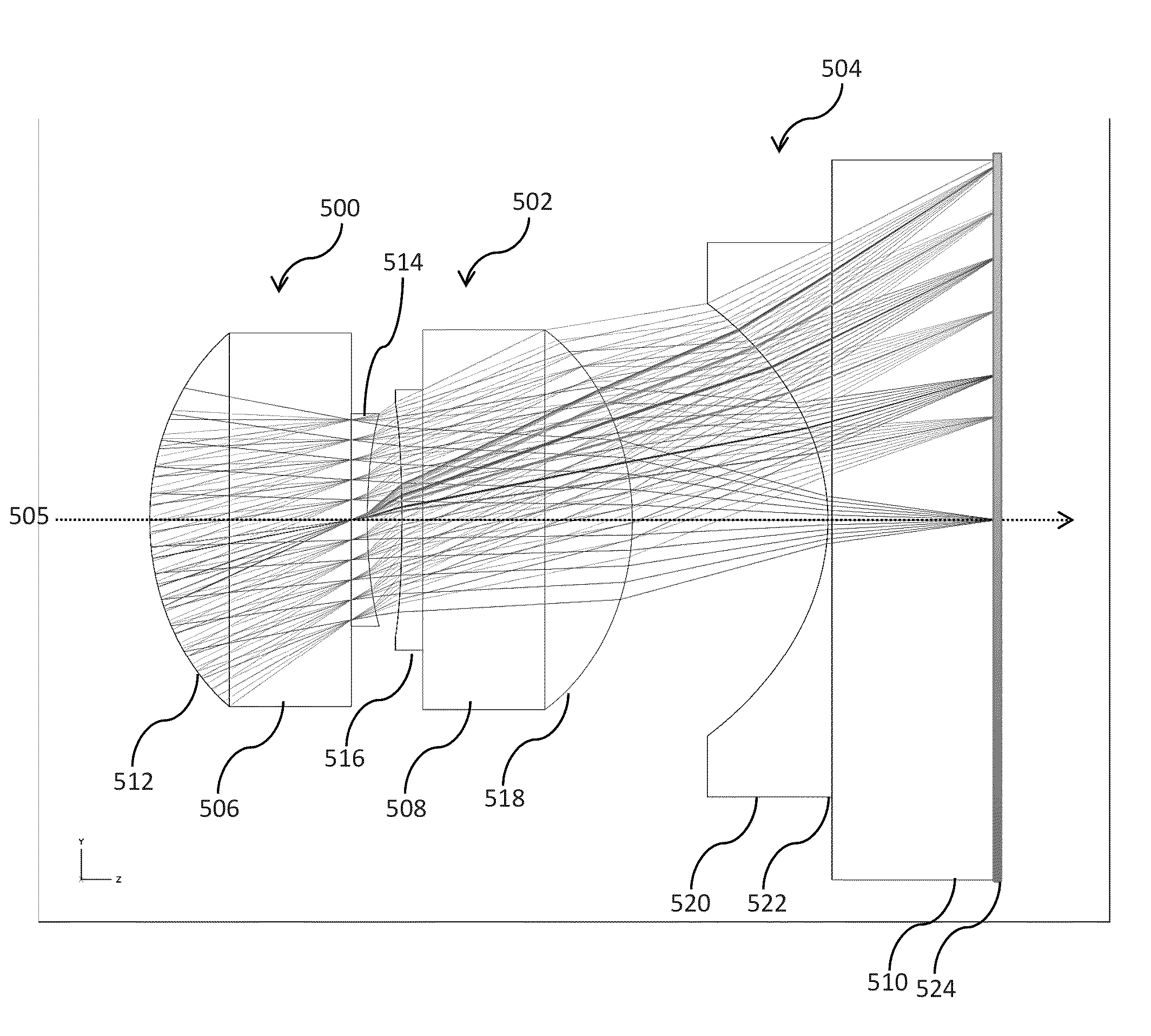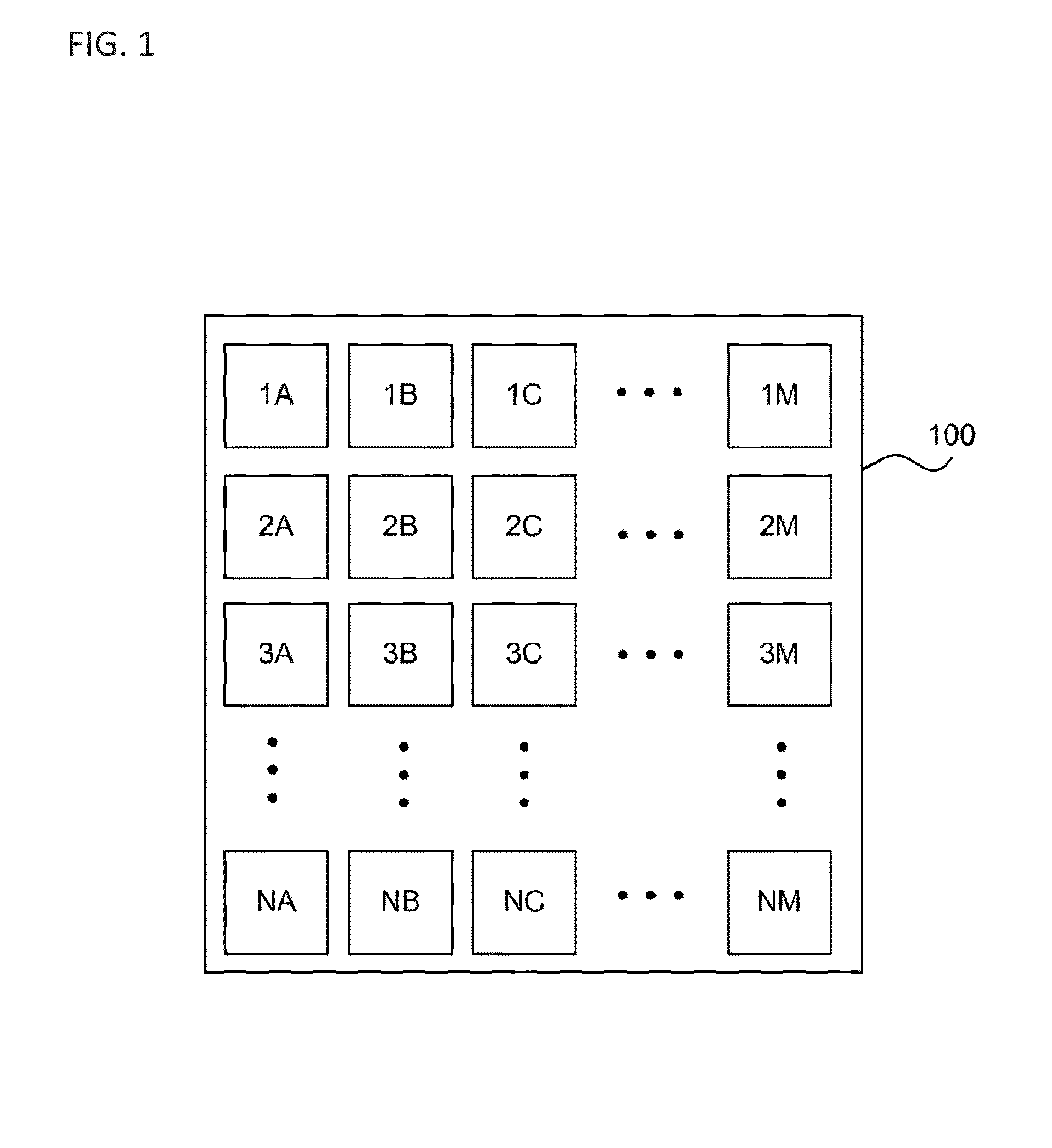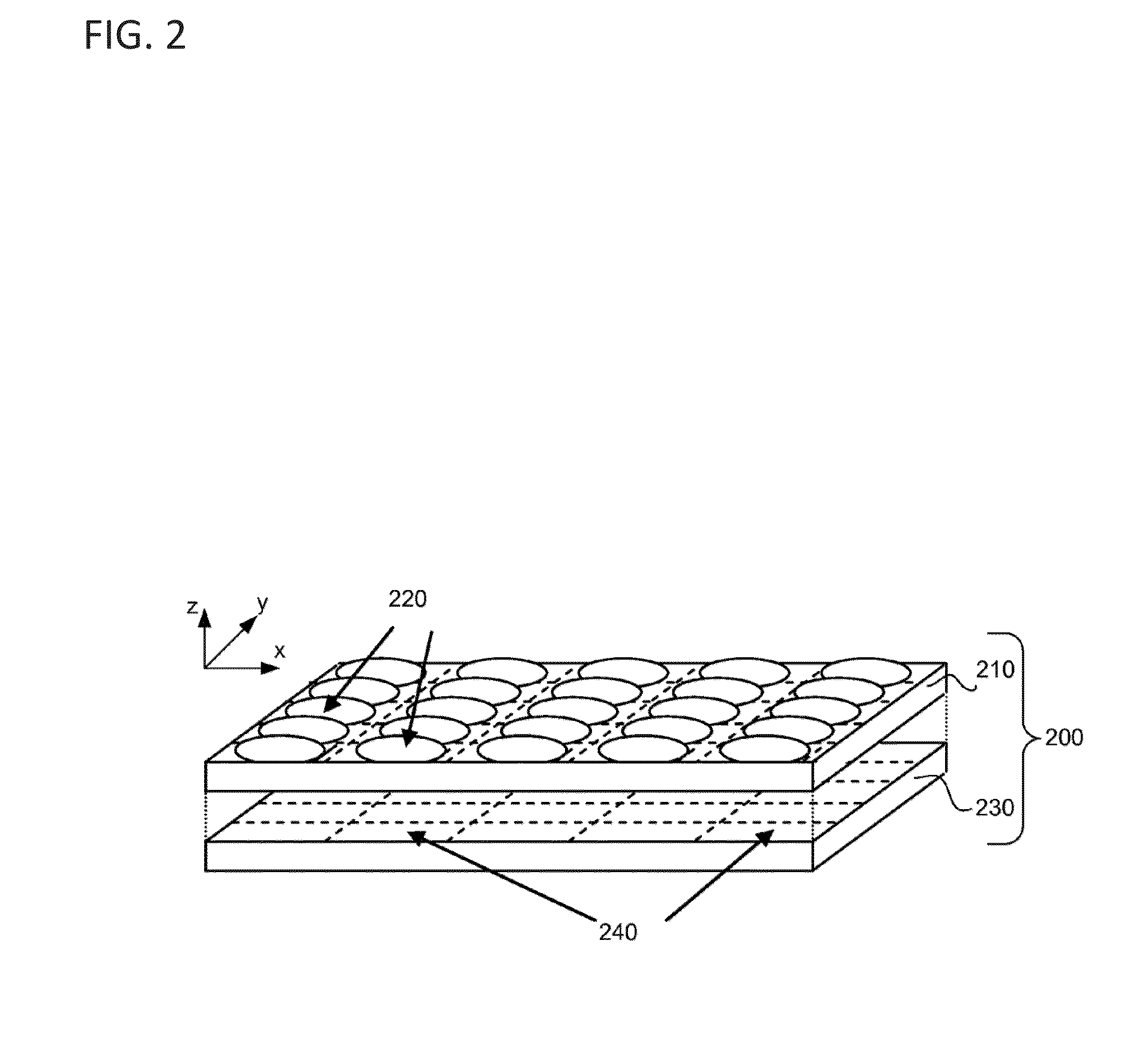Optical arrangements for use with an array camera
an array camera and optical arrangement technology, applied in the field of optical arrangement, can solve the problems that the manufacturing techniques of monolithic lenses, polymer-on-glass wlo and wlo have not been adapted for the specific high performance requirements of array cameras, and the wlo technique cannot be used to manufacture array cameras
- Summary
- Abstract
- Description
- Claims
- Application Information
AI Technical Summary
Benefits of technology
Problems solved by technology
Method used
Image
Examples
embodiment 1
e WLO Design
[0118]Traditional wafer level optics (WLO) is a technology where polymer lenses are molded on glass wafers, potentially on both sides, stacked with further such lens wafers by spacer wafers, and diced into lens modules (this is called “polymer on glass WLO”) followed by packaging of the optics directly with the imager into a monolithic integrated module. As will be described in greater detail below, the WLO procedure may involve, among other procedures, using a wafer level mold to create the polymer lens elements on a glass substrate. Usually this involves incorporating apertures, and in particular the aperture stop by providing openings centered with the later lens channels in an otherwise opaque layer onto the substrate before lens molding.
[0119]In a first embodiment, a three-surface optical arrangement suitable for the fabrication by wafer level optics technology, and, in particular, to be used for the optics (as one of the multiple channels) of an array camera is des...
embodiment 3
ens Design with Embedded Substrate
[0168]The embodiments previously discussed dealt with lenses made in accordance with a polymer on glass WLO process. In the following embodiment optical arrangements and designs using a monolithic lens WLO process are provided. In particular, in a first embodiment a monolithic lens stacked with planar substrates for use in forming apertures and filters is described.
[0169]FIG. 6A shows the current state of the art of monolithic lens systems. More or less the same conceptual approach is taken as in creating injection-molded lenses and their packaging. In the state of the art of monolithic lens WLO, many lenses are fabricated on a wafer scale. These replicated lenses 600 are stacked with other previously replicated lens wafers of different topology, the sandwich is diced, and the lens cubes are packaged into an opaque housing 602 with the image sensor 604, which contains the aperture stop 606 at the front as shown in FIG. 6A. This very much limits the ...
embodiment 4
ens Design with Embedded Aperture Stop
[0181]This embodiment of the invention provides yet another alternative for aperture and filter placement within the lens stack of polymer or glass WLO monolithic lenses. As described above with respect to Embodiment 3, the current state of the art for producing monolithic lens optical arrays is to stack the independently replicated monolithic lens wafers, dice the sandwich and package the lens cubes into an opaque housing which contains the aperture stop as an integral part at the front of the array. This methodology limits the degrees of freedom for the optical design of the objective, as well as making it extremely difficult to accurately align the lenses with respect to of the aperture stop.
[0182]Embodiment 3 of the invention described a polymer or glass monolithic lens stacked with substrates for the placement of apertures and filters. In that embodiment of the invention, a substrate, such as glass, having aperture and / or filters thereon is...
PUM
 Login to View More
Login to View More Abstract
Description
Claims
Application Information
 Login to View More
Login to View More - R&D
- Intellectual Property
- Life Sciences
- Materials
- Tech Scout
- Unparalleled Data Quality
- Higher Quality Content
- 60% Fewer Hallucinations
Browse by: Latest US Patents, China's latest patents, Technical Efficacy Thesaurus, Application Domain, Technology Topic, Popular Technical Reports.
© 2025 PatSnap. All rights reserved.Legal|Privacy policy|Modern Slavery Act Transparency Statement|Sitemap|About US| Contact US: help@patsnap.com



